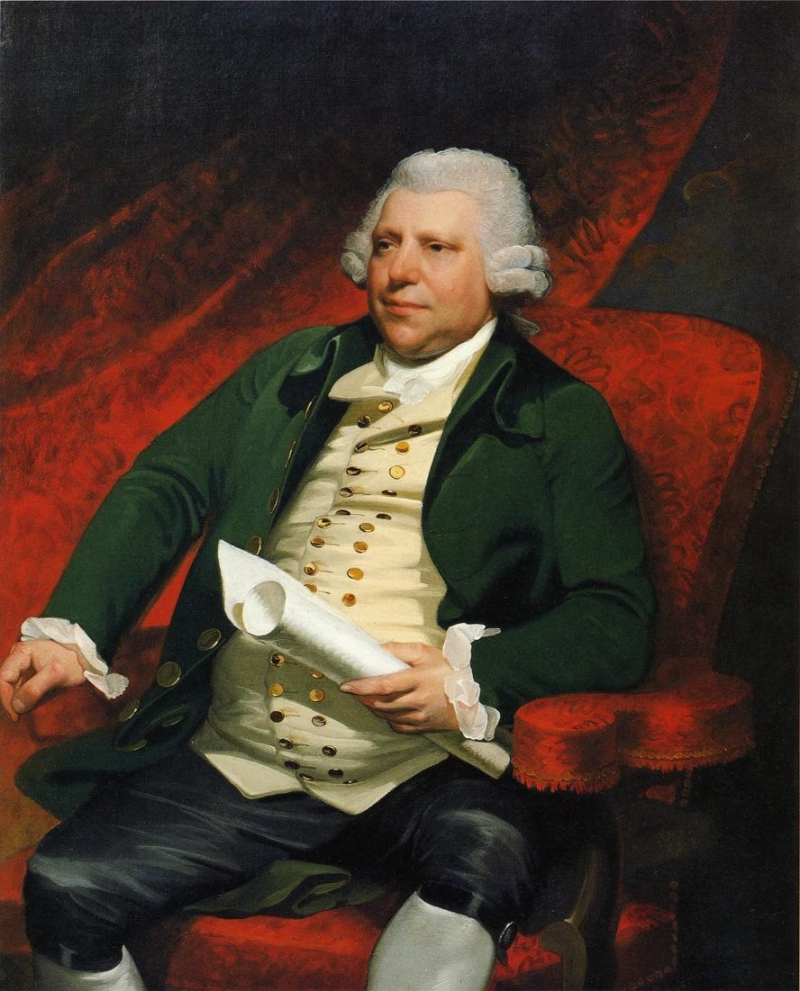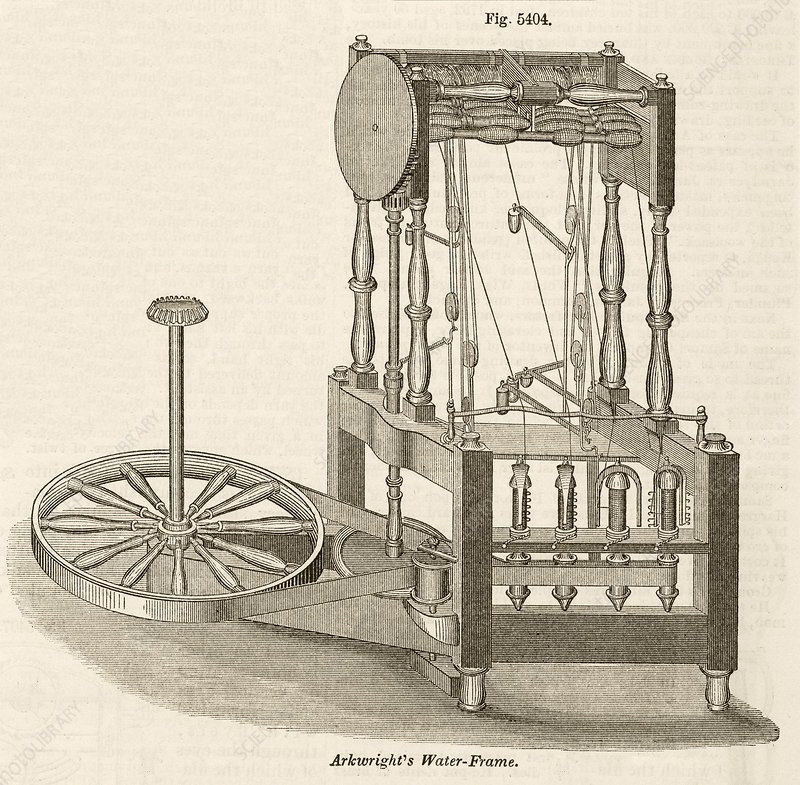Richard Arkwright
During the early Industrial Revolution, Englishman Sir Richard Arkwright was a pioneering inventor and businessman. As one of the major inventors of the Industrial Revolution, he is credited with being the impetus behind the creation of the spinning frame, which later became known as the "water frame" after being modified to run on water. He also designed a rotating carding machine to turn raw cotton into a "cotton lap" before spinning. He was the pioneer in creating plants with automated carding and spinning processes.
In order to generate mass-produced yarn, Arkwright combined power, machinery, semi-skilled labor, and the new raw cotton material. Because of the procedures he created in his mill in Cromford, Derbyshire, his organizing talents won him the "father of the modern industrial factory system".
When Richard Arkwright and John Kay, a clockmaker, returned to Preston in 1768, they rented rooms in a home on Stoneygate and built a spinning machine. The spinning frame, invented by Arkwright in 1769, used wooden and metal cylinders instead of human fingers to create twisted threads. The cost of cotton spinning was significantly decreased by this device, which horses first propelled, and it would bring about significant changes in the textile industry.
The carding machine was created in 1748 by Lewis Paul. After making modifications to this device, Richard Arkwright obtained a patent in 1775 for a novel carding engine that transformed unprocessed cotton into a continuous skein before spinning. After drawing out the roving with a series of uneven rollers rolling at progressively greater speeds, the machine applied a twist using a bobbin-and-flyer system. It might be able to make cotton strong enough and thin enough for the fabric's warp threads.
A small horse-driven factory was established in Nottingham by Arkwright and John Smalley of Preston. Arkwright partnered with wealthy nonconformist hosiery manufacturers Jedediah Strutt and Samuel Need to raise money for growth. The partners constructed Cromford, which included carding and spinning activities and employed 200 workers, as the first water-powered mill in the world in 1771. Following the construction of a second, larger mill at Cromford in 1776, Arkwright also constructed mills in Bakewell, Wirksworth, and other locations. In his own day, he was well-known for his achievements as an inventor and businessman. The spinning frame was a considerable improvement over Hargreaves' spinning jenny since it produced strong yarn suited for warp threads with very little training.
Born: 23 December 1732 (Preston, Lancashire, England)
Died: 3 August 1792 (Cromford, Derbyshire, England)












